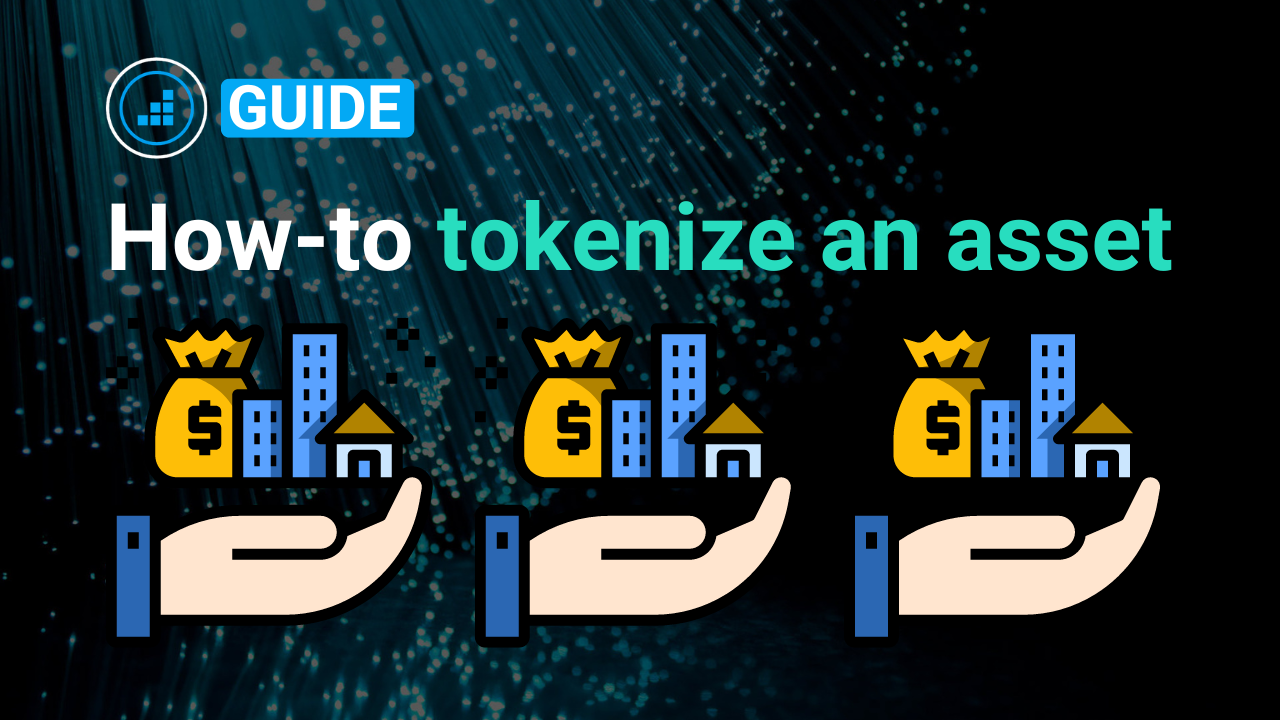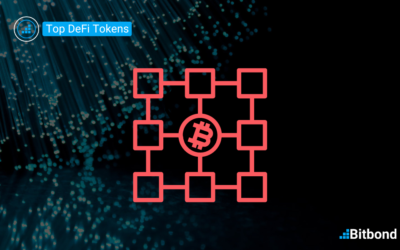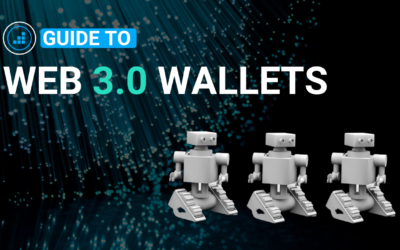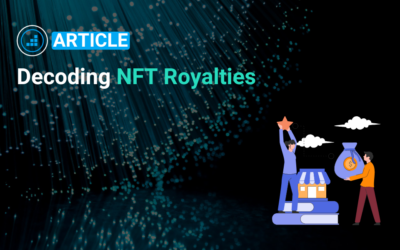Table of Contents
After the inception of Bitcoin, the need for a blockchain protocol beyond the use case of value exchange became quickly evident. Bitcoin’s decentralized and instant nature revolutionized the way humans transact amongst each other.
However, Bitcoin was not sufficient to tokenize an asset on blockchain. Tokenizing an asset is the process of creating a digital representation of real life assets. This makes them easily transferable between parties on an underlying Distributed Ledger Technology (DLT).
Ethereum rose to the scene as it birthed the tokenization of assets through so-called smart contracts. Represented by tokens, financial assets are now seamlessly issued on top of immutable record keeping systems thanks to Ethereum’s groundbreaking innovation.
The Ethereum blockchain was recently successfully upgraded with the merge that was implemented between the PoW ledger and the so-called Beacon chain. As energy consumption represented a burden to adoption in Ethereum’s lifetime, this was another move carried out by the network to transform the network’s consensus mechanism into a drastically more energy efficient protocol.
Creating a digital representation of ownership and programming it to self execute with predetermined rules, has become easier than ever. All occurs by leveraging a highly secure and transparent underlying ledger.
How to tokenize an asset? What is required in order to tokenize real life assets alongside guaranteeing value? This article will guide you through the process of how-to tokenize an asset in 4 summarized steps.
Guide for how-to tokenize an asset
Step 1: Tokenize an asset by defining asset type & asset documentation
- Identify asset type to tokenize an asset
To tokenize an asset, an issuer must first identify the asset representing the tokens created. This asset will serve as the underlying value backing the tokens being issued and transferred to investors.
Other terminologies used to describe tokenized assets are, tokenized securities, security tokens, NFTs, and/or tokens. It is important to note that depending on the set up and underlying value pegged to the tokens, some NFTs and tokens, are not necessarily a tokenized asset. Meaning they are not backed by real life assets, security tokens on the other hand are tokenized assets.
- Identify jurisdiction for tokenized asset issuance
Once the asset type to be tokenized is defined, it is important to choose the jurisdiction in which the tokenized asset will be issued. As the tokenization of assets is a new phenomenon, some countries do not recognize, nor offer, the legal infrastructure to tokenize an asset in a regulated environment.
Therefore, tokenized assets issued in these jurisdictions might not offer the necessary insurance and protection required for it to be classified as a tokenized asset, it might be needed to simply issue them as traditional financial digital securities.
Additionally, some financial instruments can be tokenized, whereas others still do not have the regulatory approval required to tokenize these assets. This is applicable even in crypto friendly legal jurisdictions. The future for eventually creating a regulatory environment that allows all types of assets to be tokenized does seem bright.
Germany is among the jurisdictions in Europe that are progressive in relation to crypto regulations. They already enable the possibility of tokenizing a variety of asset classes such as bearer bonds under the eWpG.
- Prepare legal documentation to tokenize asset
To tokenize an asset, issuers conduct a so-called Security Token Offering (STO), legal documentation is required to effectuate the latter. Under German law, there are three options to approach an STO. It can be by tokenizing :
- A registered bond
- A bearer bond
- A private placement
These legally issued securities are referred to as security tokens. In general, the documentation you have is not very different from traditional security offerings. However, you would need to specify that the settlement is not being through a Central Securities Depository (CSD), but a specific blockchain to conduct the process will be utilized.
Step 2: Choose which tech stack to be used to tokenize an asset
- Blockchain protocol analysis & selection for tokenizing assets
You need to select a blockchain by studying the different characteristics of a protocol and conducting your own analysis. The commonly used protocols currently for asset tokenization use cases are:
- Ethereum
- Polygon
- Avalanche
- Stellar
Each blockchain protocol has its own advantages and disadvantages. The different criterias to usually consider in a blockchain protocol analysis are:
- Scalability: how scalable is the blockchain
- Security token track record: were there any security tokens issued on that blockchain?
- Acceptance of custody solutions: which blockchain protocols are supported by available custody solution
- Transaction fees: some blockchains such as Ethereum have high fees
- Compatibility: protocol complexity, underlying smart contract code, and its compatibility with other crypto infrastructures (i.e. exchanges, providers…)
- Smart contract creation & token issuance
The process of issuing tokens, as well as security tokens, is called minting. On a DLT, customized tokens can be minted to represent ownership. The issuer must have an issuer wallet (i.e. issuer account where tokens are released to the blockchain) that can sign transactions. This links token issuance with the custody of wallet’s private keys. Whoever has the keys, controls the tokens.
The tokens are created using smart contracts responsible for automatically executing tasks on the blockchain. To tokenize an asset issuers need to develop these smart contracts, and the applications to interact with these smart contracts and blockchain protocols.
This can prove to be highly challenging as big organizations lack the resources to efficiently execute the development of such products. Instead of going through the challenges of developing your own smart contracts, and the user interface. Many Web 3 applications are attempting to provide users with seamless access to DeFi and blockchain technology.
Token Tool is one that enables users to create & manage tokens, easily sell them by launching token offerings, via a user friendly interface. It supports Ethereum and so-called EVM-Compatible protocols. Smart contracts on Token Tool are programmed in some of the token standards mentioned at a later stage in this article.
As a token minting engine, Token Tool supports established custody technology providers, which is another main component required to successfully tokenize an asset.
- Issuer & investor asset/key custody
To tokenize an asset you need a custody solution. As the tokens are issued in an issuer account (aka wallet), private keys are used to control that account. Safekeeping these private keys is important to maintain control of the account even after the primary issuance. Several custody technology solutions are available to achieve the latter.
Typically you would have multisig, especially in an institutional set up. Multisig ensures that there is no single point controlling the account. Multiple signers are required to sign a transaction. Eliminating a single point of failure.
Qredo and Gnosis Safe are compatible with Metamask. They are a great way to enable institutions with access to multisig technology using web 3 custody technology. Fireblocks and Metaco are other competitors that provide bank grade IT security, transactional approval policies, and backup / disaster recovery.
Fireblock supports wallet connect which is important to provide compatibility with Web 3 applications.Usually, different custody solutions have different APIs. Integrating with these APIs is a difficult process.
Supporting Web 3 custody technology such as Metamask, or WalletConnect, provides access to a wide range of applications. Making it compatible with tokenization solutions like Token Tool mentioned above.
As Token Tool supports Metamask and WalletConnect, you can use all the custody solutions mentioned and others to create, manage, and distribute tokens. Tokenization is now much more accessible through a very broad range of sophisticated custody solutions as they can be connected with Web 3 applications to interact with.
Investor: Custody is required on the investor side as well. There are plenty of custodians that support a broad range of protocols and custody technology.
Step 3: Smart contract creation & issuance
- Define token configuration & token standard
Once you identify your token name and ticker, the token standard on which your tokenized asset will run is another key factor to tokenize an asset.
Different standards are in place for programming smart contracts. Depending on the use case and the features required for each token, different token standards apply. The most commonly used ones are:
- ERC-20 / ERC-1400: universal standard used for fungible tokens. Commonly used as security tokens, utility tokens, governance tokens.
- ERC-721 / ERC-1155: standard for non-fungible tokens (NFTs). Used in digital content such as images, audio / video.
Also they can be programmed in different programming languages (i.e. solidity in the case of Ethereum). As different standards apply for different protocols, enabling different features. Studying the most fitting / compliant token standard for your use case is important to tokenize an asset.
Choosing the token standard entails choosing a standard that has the capability to create your token with different features required for your use case. Since financial institutions, or issuers, looking to tokenize an asset are usually subject to stricter security & regulatory requirements, they would need a configuration that is similar to the ERC-1400 token standard.
Token configuration feature examples can be:
- Basic ERC-20 features:
- Can burn: Enables token burning after initial token creation to decrease supply
- Can mint: Enables additional token minting after initial token creation to increase supply
- Can pause: Specifies whether your token and all associated operations can be halted and resumed whenever needed.
- Can Blacklist: Specifies whether individual accounts such as malicious actors can be blacklisted after initial token creation.
- Change owner: The default owner is the address of the connected wallet.
- More sophisticated security token features complementing the ones above (i.e. ERC-1400):
- Has a document: Add an offering documentation such as a prospectus or whitepaper here.
- Max number of tokens per address is limited: Sets maximum token balance per individual address.
- Can be force transferred: Regulates the permissions of the token issuer to enforce token transfers without approval or signature of the token holder.
- Requires whitelisting: Defines if token transfers are only possible to whitelisted addresses or if the token is freely transferable.
All token configuration features mentioned above are provided by Token Tool as well.
- Define token offering parameters
After defining all parameters and features for your token, the parameters of the token sale should be identified.
Depending on the set up of your offering and the legal requirements it is subject to, you would need to identify the different parameters required to configure your token sale. Key considerations for your token offering set up are:
- Payment
- Token price
- Amounts to be raised in the token sale
- Investment amount per investor if applicable
- Token sale time & duration
- If any can invest or Investor whitelist is required (most of the time in a regulated set up whitelist is required for KYC purposes)
- Token sale owner, in other words the wallet controlling the token sale
- Create token & token offering
At this stage, all necessary information should be ready alongside the legal documentation. Once that is achieved, it is time to create the token and token sale. As mentioned, this is achieved by programming a smart contract that runs on the blockchain network of your choice.
For the token, a smart contract in the designated token standard is to be coded for creating the token. The token sale is created also using a smart contract, more precisely referred to as an ICO token sale script.
Organizations or individuals looking to tokenize an asset using blockchain technology, most of the time lack the know-how for creating programs on blockchain. It was stated above in the article, that developing such complex financial products proves to be very challenging, and making it compliant to regulatory and IT security standards is another challenge in itself.
That is why Token Tool comes into play and serves as your all-in-one toolbox for easily creating smart contracts without having to write a single line of code. In a click of a button, users can leverage Bitbond’s renowned track record in developing tokenization solutions with bank-grade standards.
As the industry matures, players in the ecosystem start to develop products to facilitate participation in DeFi. Making blockchain more accessible through service providers developing web 3 applications that are taking over the future of the internet.
Step 4: Payments settlement & secondary market
- Define currency + accept investments
Now that the tech stack behind the issuance is ready, the legal documentation is ready, and marketing activities for your tokenized asset sale have begun. Defining the currency in which investments can be completed.
In a set up such as Token Tool, users can leverage the full potential of tokenization and accept payments in cryptocurrencies. This spares the need to deal with fiat transactions which make the offering process more complex as it requires more intermediaries to get involved.
However, cryptocurrencies are volatile, you can reduce the risk of exposure to price volatility by accepting payments in stablecoins. Stablecoins usually have their value pegged to traditional fiat currencies. Tether’s USDT, or Circle’s USDC, are very good examples of commonly used stablecoins.
Token Tool enables users to create token sale and accept investment in stablecoins or other custom tokens.
- Book building & distribution
You need something to run the book building process. Users can manage investor on-boarding manually via a spreadsheet or via a professional product such as the Bitbond Offering Manager.
When managing investor on-boarding the following information about the investors must be collected:
- Full name (and legal entity in case of an institutional investor)
- KYC document (e.g. image of an ID card or passport) of investor or legal representative
- Full postal address
- Date and place of birth
- Citizenship
- Tax ID
- Email address
- Blockchain wallet address
- Declaration about source of funds
When all data is checked, the wallet address can be added to the whitelist and email updates can be sent (e.g. when the sale starts and finishes).
- Complete issuance
The issuance is complete once investors and issuer receive their funds accordingly. Using Token Tool, investors can claim their funds via a non-branded interface, easily integrated within the issuer’s front end. The issuer can also withdraw the total raised amount from the smart contract to their wallet.
- Enable secondary trading
Tokens can be traded on decentralized exchanges (DEX). In the context of security tokens, the central securities depository regulation (CSDR) prevents traditional securities exchanges from trading these forms of tokenized assets. The SocGen security tokens listed on LuxSE SOL is a real life example of security tokens that got listed on centralized exchanges (CEX), they are however not tradable.
The current situation also requires security tokens to be registered in a central securities depository (CSD), as well as having payment settlement be performed by the CSD. DLT exchanges must acquire a formal CSD license to list security tokens.
These are subject to change partially under the DLT pilot regime that is scheduled to come into effect in March 20223. The DLT Pilot regime represents a controlled environment (“sandbox”), providing exemptions from certain regulatory requirements (MIFID II, CSDR). Trading DLT transferable securities that are not booked in a CSD but recorded on MTF’s distributed ledger will be part of this sandbox.
Examples of DEX that can be used list security tokens:
Examples of CEX that can be used to list security tokens:




